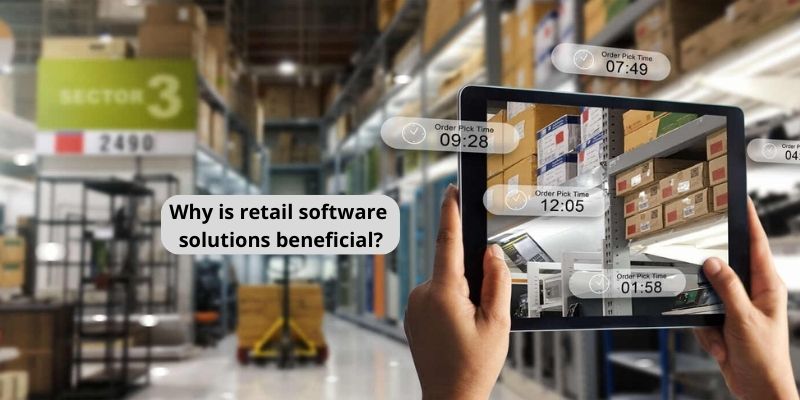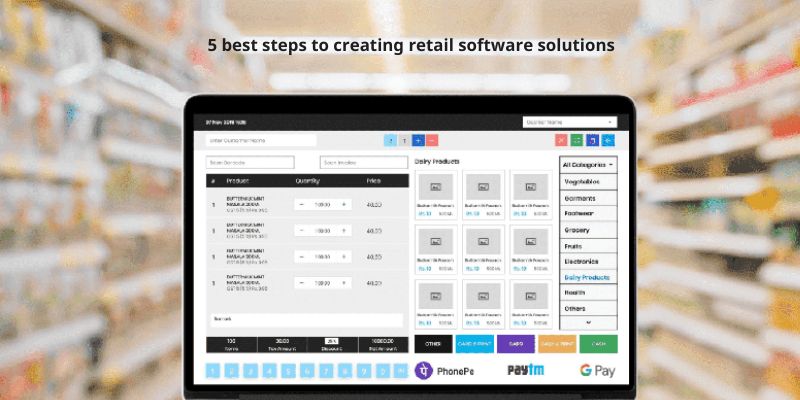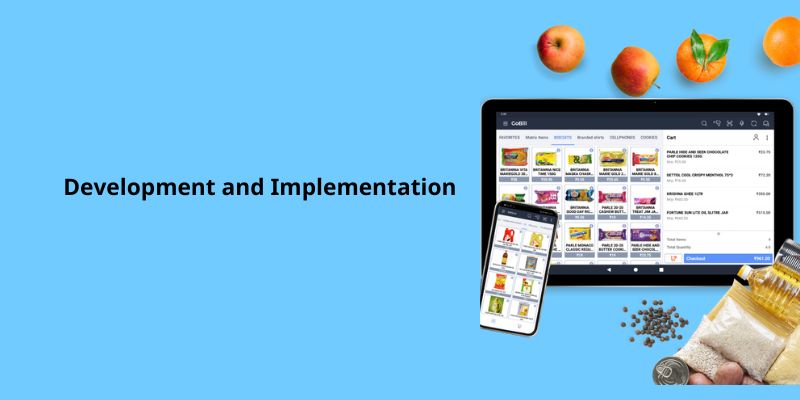Retail establishments must provide excellent client experiences in the digital era to be competitive. It’s critical to efficiently manage all store procedures and automate a number of manual tasks. They want retail software that gives shop employees effective tools to operate operations smoothly and finish jobs on schedule. The article: Creating retail software solutions – 5 best steps by techzvn.net.
Why is retail software solutions beneficial?
Before learning about 5 best steps to creating retail software solutions let’s find out Why is retail software solutions beneficial?.
Why is retail software solutions beneficial?. Under the effect of changing customer behavior, retail software solutions sector is going through significant changes. In essence, individuals are getting irritated faster:
If an item is unavailable and there is no help around, 87% of customers leave the store.

30% of shoppers check to see if an item they wish to buy is in stock in less than two minutes.
After three partial or late delivery, 78% of customers say they won’t use the same vendor again.
Therefore, in order to stay competitive and draw in devoted customers, brick and mortar companies must make a technological transformation.
For businesses of all sizes, creating retail software is the smart move. A retail chain with hundreds of points of sale (POS) may use retail software solutions, which is scalable and can be integrated with any type of retail business.
5 best steps to creating retail software solutions
Have you considered how this kind of solution can streamline your operations? If yes, you should start learning how to create software for the retail market. 5 best steps to creating retail software solutions:

1. Choosing the Right Vendor
The choice of a reliable software supplier is a crucial and difficult process. Spend some time carefully considering your decision. Your decision will affect how smoothly the deployment will go and how favorably a future system will affect the efficiency of your company.
The major suggestion is to select suppliers who focus on the retail sector because:
- minor software modification will be required;
- Unlike databases for other sectors, which differ greatly and need to be molded or created from scratch, you will receive a ready-to-use database;
- a lot of misunderstandings will be avoided because you and your vendor will speak the same language;
- You’ll be able to get reliable testimonials from rival businesses and benefit from their expertise.
Another point is to choose between cloud and on-premise hosting. Since the system can be deployed anywhere, you should be guided by your company’s needs and budget.
SAP, Magento, and Sitecore are the three biggest software vendors for the retail sector.
2. Planning and Budgeting
The next stage is to talk about the essential components your system should have and develop a thorough strategy. Think on if you require an omnichannel solution, what tasks it should do, and what external systems you wish to integrate.
In light of this, you have the option of going with an off-the-shelf solution or going with bespoke creation.
The budget you have available should match your idea of the ideal future solution. It might take two to five weeks for the planning phase.
3. Development and Implementation
It is obvious that the installation of ready-made solutions requires significantly less time than bespoke creation.
In any event, during the implementation phase, your business will experience major cultural and technological changes. Therefore, it is crucial to:
form an internal team of qualified professionals with the necessary experience to take part in the implementation;

Perform data cleansing (make decisions regarding documents and other items in your legacy system; eliminate inactive accounts and records that have not been processed for years to simplify the migration); prepare the staff for the new system, explain its benefits, and provide any necessary training.
This stage can take anything from a few months to more than a year, depending on the specifics of the organization.
4. Testing
The management system is complex and calls for testing and oversight. The majority of businesses use continuous testing to ensure that the process and integration take place concurrently.
Get ready to discuss many concerns and make changes. The primary objective of the final testing is to model your company’s lifecycle using go-live procedures.
5. Maintenance
A system that has been established effectively requires additional support and upkeep. Both your technical experts and the software provider may offer this.
Conclusion
SaM Solutions’ primary strengths include the creation of retail software. Our business, which has a wealth of expertise in creating eCommerce and retail systems, can work with you as a trustworthy partner to help you lead the retail sector.
Please complete the contact form to get a consultation if you require retail shop management software or simply want to learn more about our capabilities. techzvn.net hope you will collect useful and necessary knowledge through the above article: …
